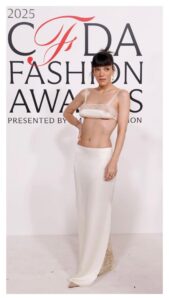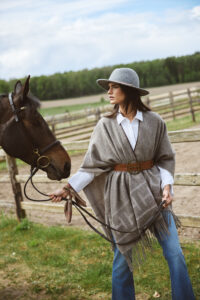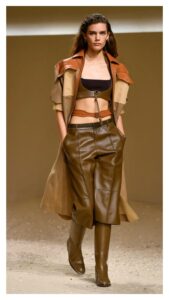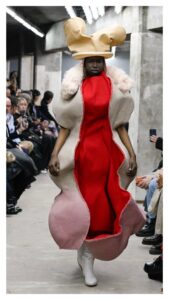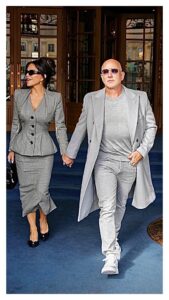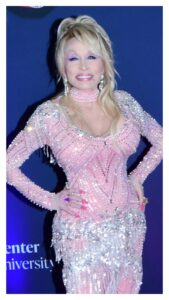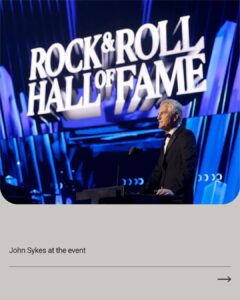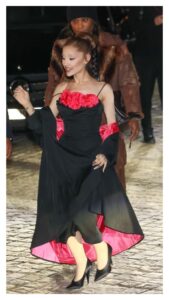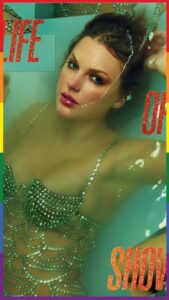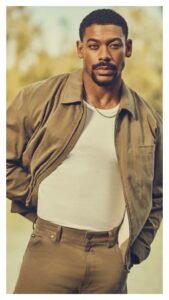Viktor & Rolf: The Duality of Couture at Fall/Winter 2025
SAXS July 30, 2025On a crisp Wednesday afternoon, the iconic Salle Wagram in Paris played host to a remarkable display of haute couture as Viktor Horsting and Rolf Snoeren, the Dutch design duo behind Viktor & Rolf, unveiled their Fall/Winter 2025 collection. Known for their theatrical presentations and avant-garde aesthetics, the designers once again captivated the fashion world with their latest offering, aptly titled “Angry Birds.”
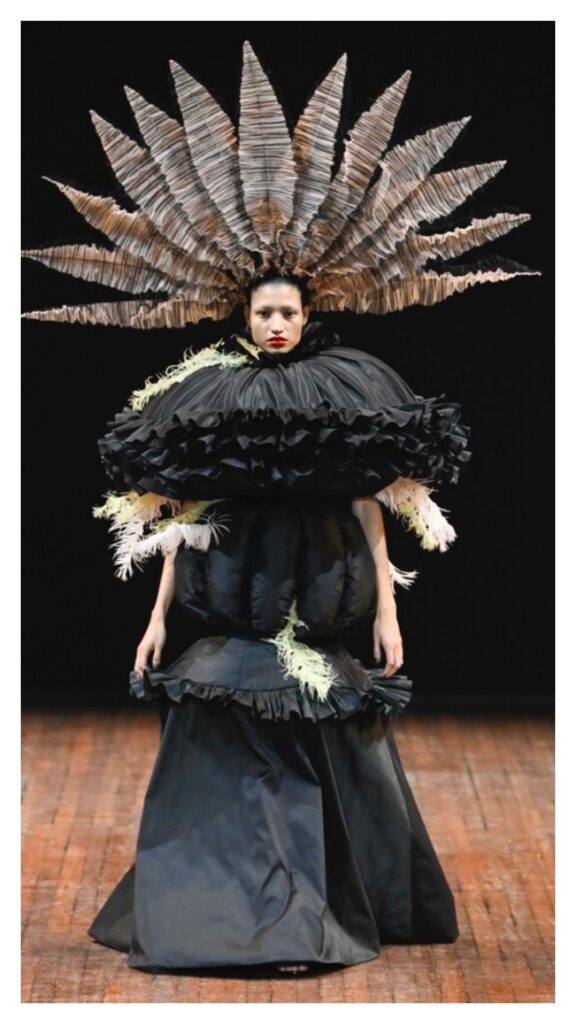
Viktor & Rolf: The Duality of Couture at Fall/Winter 2025
Viktor & Rolf: The Duality of Couture at Fall/Winter 2025
The atmosphere was electric as a diverse crowd filled the historic auditorium, located near the Arc de Triomphe. Fashion insiders, influencers, and dedicated fans of the brand occupied the front row, all eagerly awaiting the show. Backstage, amidst the whirlwind of preparations, Horsting shared a glimpse into their creative process, stating, “Feathers came to mind, but we don’t really know why.” This enigmatic statement set the tone for an exploration of duality that would unfold on the runway.
The collection was a striking study in contrasts, comprising fifteen pairs of identical garments—an impressive total of thirty looks. Each pair featured two variations of the same black outfit: one extravagantly adorned with vibrant, colorful feathers, while its counterpart stood bare, unembellished, and fluid in silhouette. The designers expertly captured the expressive potential of both presence and absence, creating a dialogue between the opulence of couture and the understated elegance of simplicity.
The feathered creations were nothing short of spectacular. Each garment was adorned with a staggering 11,500 artificial feathers, meticulously crafted from gossamer fabric to resemble the real deal. The feathers were not merely decorative; they sculpted a voluminous silhouette that was both exuberant and theatrical. To complete the looks, Horsting and Snoeren collaborated with renowned milliner Stephen Jones, who designed custom hats that crowned each ensemble with an additional touch of whimsy.
In contrast, the featherless versions of the garments showcased the designers’ mastery of draping and proportion. The all-black outfits, devoid of embellishment, became a quiet shadow—an exploration of how the same materials could transform when stripped of their theatricality. The contrast was striking: where the feathered looks dazzled with their vibrancy, the bare versions exuded a minimalist allure that highlighted the craftsmanship of the fabrics themselves.
The custom satin heels by Christian Louboutin further enhanced the dichotomy, grounding the fantastical elements with a touch of sophistication. As the models glided down the runway, the audience was treated to a visual feast that played with light, volume, and silhouette.
Despite their extensive body of work spanning three decades—from couture to perfumes—the duo’s exploration of feathers was a new venture. “When we started thinking about the season, the image of a feather came to mind,” Snoeren explained post-show. “Perhaps feathers, a bird flying, freedom. There’s all of that, but it’s also one of the tropes of couture, and we never did anything with feathers.”
This collection marked a significant departure for Viktor & Rolf, who have long been recognized for their innovative approaches to fashion. Each of the fifteen sculpturally stuffed silhouettes was paired with its twin, identical in cut and material yet devoid of any stuffing. This concept of presenting the same garment twice was not entirely new for the designers; they had previously experimented with similar ideas, including their iconic atomic mushroom silhouettes in 1998. However, this collection brought a fresh perspective to the concept, allowing for a deeper exploration of the relationship between volume and silhouette.
The runway became a canvas for this exploration, as the feathered and featherless outfits stood side by side, each telling its own story. The dramatic opera coats, with their abundant feather embellishments, transformed into austere, oversized dresses when presented in their bare form. Warped layers and intricate details that were once hidden beneath the vibrant feathers emerged in the black versions, revealing the skillful craftsmanship that defined the collection.
The vibrant, colorful feathered ensembles evoked a sense of playfulness, reminiscent of characters from popular culture such as Effie Trinket from “The Hunger Games.” In contrast, the simplified looks took on a more subdued, punk-inspired vibe. The juxtaposition between the two variations was not merely aesthetic; it raised questions about identity, perception, and the nature of fashion itself.
As the final model exited the runway, the audience was left in a state of reflection. The post-show discussions turned into a Rorschach test of sorts, with attendees interpreting the collection through various lenses. Critics pondered whether there was a Gothic mood permeating the designs or if the collection was a commentary on the state of the world—a nod to the popular video game “Angry Birds” that served as the collection’s namesake.
In the world of high fashion, Viktor & Rolf have consistently pushed boundaries, exploring themes of duality, identity, and the transformative power of clothing. Their Fall/Winter 2025 collection not only showcased their signature flair for the theatrical but also invited viewers to contemplate the nature of fashion itself. Through their ingenious use of feathers, the designers challenged conventional notions of beauty and elegance, encouraging a dialogue that transcended the runway.
As the fashion industry continues to evolve, Viktor & Rolf’s latest offering stands as a testament to the power of creativity and the enduring allure of haute couture. With their fearless experimentation and unwavering commitment to artistry, the duo has undoubtedly solidified their place as icons in the world of fashion, leaving audiences eagerly anticipating what they will conjure next.

